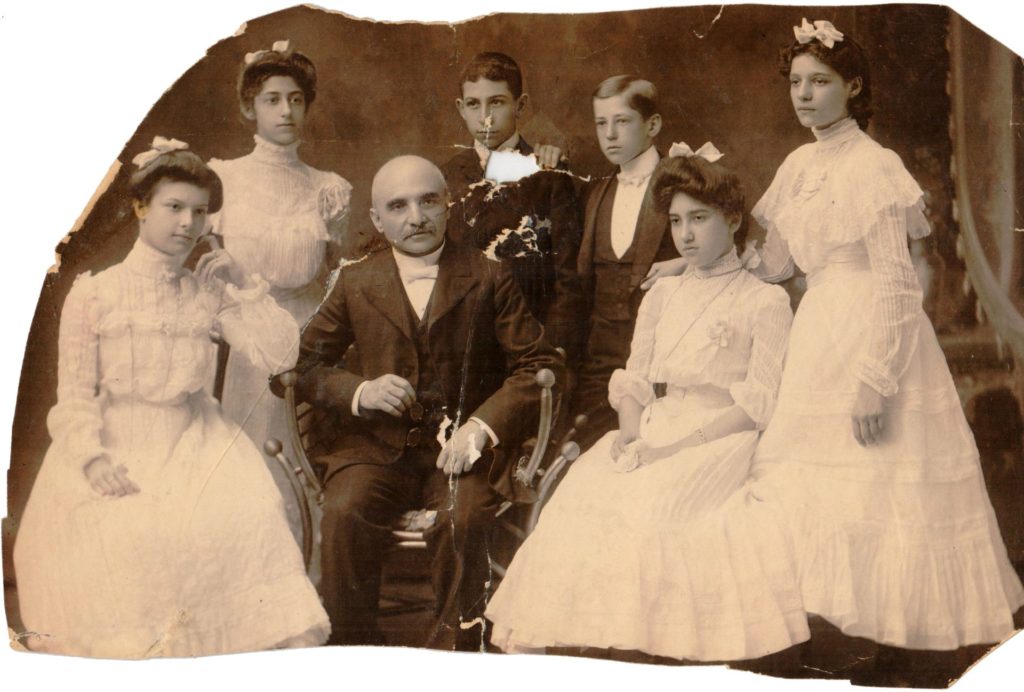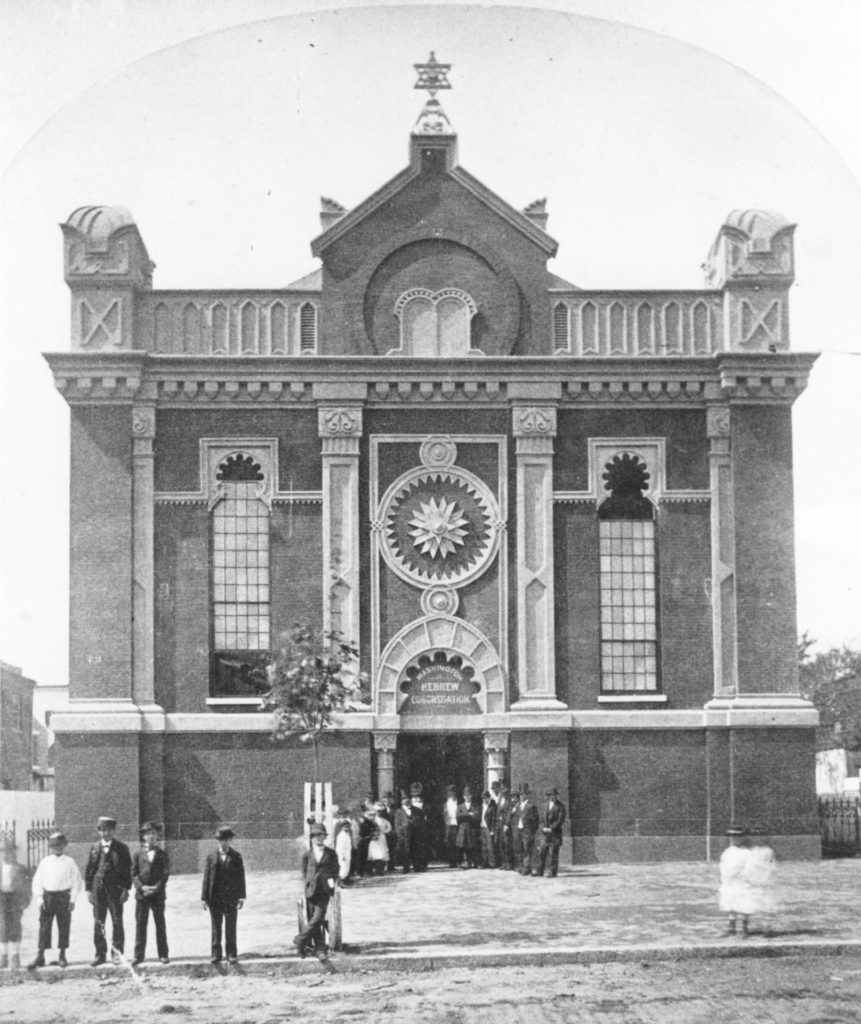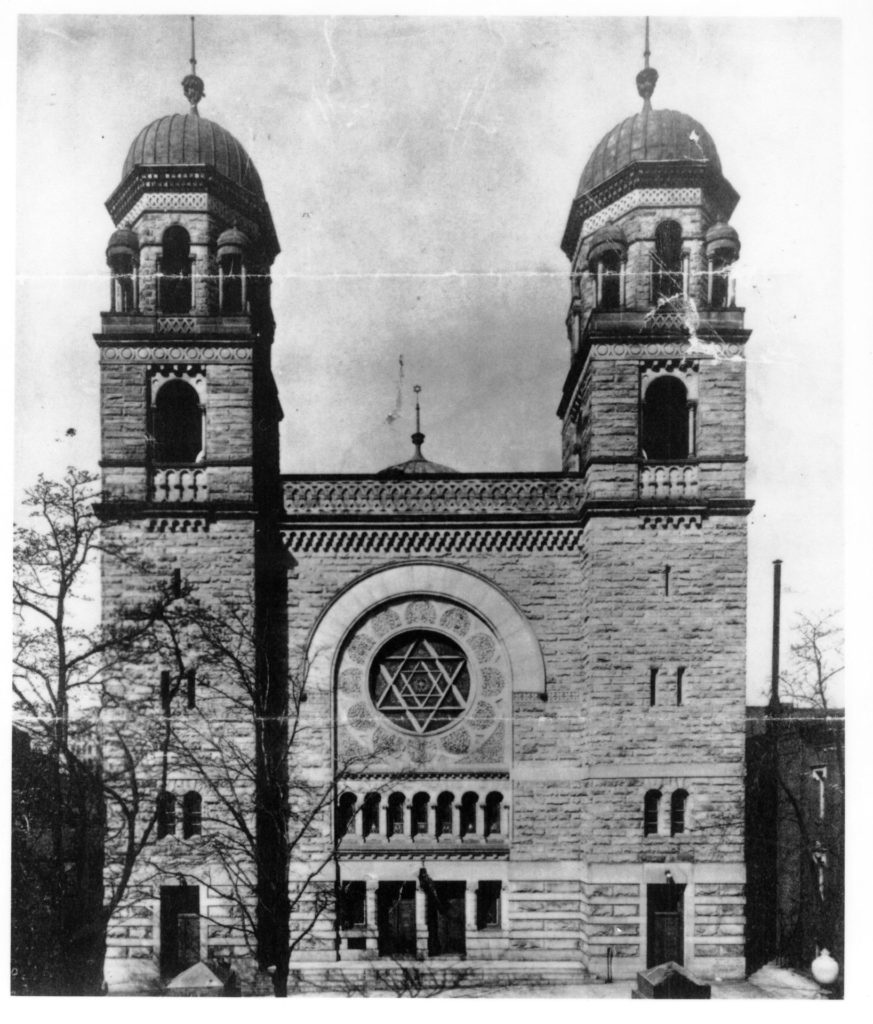The Whole Spiel
Washington Hebrew Congregation: The Early Years
by William H. Davis, WHC Archivist
June 23, 2022
To mark the 170th anniversary of the founding of Washington’s first Jewish congregation, Washington Hebrew Congregation, their archivist wrote about the highlights of the early years in their April 2022 Journal. We are pleased to share the article here with appreciation for their generous contribution. With thanks to Ori Hoffer for his contributions to this article.

Black and white photo of the earliest extant confirmation class featuring Rabbi Louis Stern surrounded by six students (four female and two male), 1901. / Courtesy of Washington Hebrew Congregation Collection
“It is said the Hebrews, or Jews, are going to establish a synagogue in Washington.”
On April 25, 1852, at least 21 German Jews met at the home of Mr. H. Lisberger on Pennsylvania Avenue, near 21st Street, to form the Washington Hebrew Congregation (WHC). The group elected Solomon Pribram as the first president, and Captain Jonas P. Levy, a naval commander during the Mexican War, had the honor of making the first recorded monetary contribution.
For a few years, members met in private homes and rented quarters, the last being Harmony Hall on D Street near the present-day Commerce Department building. With the congregation already outgrowing that space and fearful that the opportunity to hold property did not extend to synagogues, Washington Hebrew members submitted a petition to the 34th U. S. Congress on February 5, 1856, asking for the same rights and privileges enjoyed by Christian churches in the District. On June 2, 1856, President Franklin Pierce signed into law An Act for the Benefit of the Hebrew Congregation in the City of Washington. To this day, WHC is the only Jewish house of worship to operate with an act of the U.S. Congress as its charter.

Black and white photo, of a former Methodist church's façade at Eight and I Streets, NW, topped with a Star of David finial. A group of people are gathered near the entrance at the center of the photo, and a line of men stand at the edge of the curb, in front of the temple, at the left foreground. Date unknown, ca. 1863-97 / Courtesy of Washington Hebrew Congregation Collection
By 1863, the congregation was able to purchase the Methodist Episcopal Church at 8th and I Streets NW, their first permanent home. After refurbishing the structure, it was dedicated on July 31, 1863, at an elaborate ceremony attended by many city officials and religious leaders, including the prominent Philadelphia rabbi, Dr. Isaac Leeser, who proclaimed, “They had lived in one faith for upwards of thirty-five centuries…and they knew that God had favored them.”
During the first 20 years, WHC brought in “readers” from outside the congregation to be the spiritual leaders. They adopted the new “Reform,” with prayers recited in German and increasingly in English and introduced organ music and a choir to their service s. A religious school was opened in 1861 and the first Confirmation class (all girls, for the record) was honored in 1871, an annual tradition that has continued ever since.
In 1872, the congregation hired Louis Stern, it’s first permanent rabbi, as “Chazan and Leader in Hebrew and Jewish Religion.” He guided the Congregation through their most formative years – acquiring a cemetery and developing the new Reform liturgy and ritual practices. A poet, musician, teacher, and pioneer, Rabbi Stern served the congregation until h is death in 1920.

Black and white photo of Washington Hebrew Congregation's 8th Street Temple façade, built in 1898, featuring a large Star of David window above the entrance. / Courtesy of Washington Hebrew Congregation Collection
The 8th & I space was renovated in 1877 and again in 1886, but by the late 1890s, the congregation tore down the structure and built a new temple on the same site. On September 16, 1897, President William McKinley laid the cornerstone with his cabinet present as well as nearly 4,000 spectators jamming the nearby streets. At a cost of $62,000 (over $2 million in today’s dollars), the new building, constructed in the byzantine style, included a pipe organ, enormous Star of David windows, and seats for 1,350 individuals. That site would remain the home of Washington Hebrew for another half-century. The building still stands today and is the home of Greater New Hope Baptist Church.
As the congregation grew and made their homes further away from downtown DC, they again required a new space to serve their community. They began construction on the current temple at 3935 Macomb Street, NW, in November 1952, where President Harry Truman laid the cornerstone saying, “This is a happy occasion for Washington Hebrew Congregation. I am glad to take part in it.” Two years later, President Dwight Eisenhower dedicated the building.
During those first 100 years, Washington Hebrew Congregation was also led by two additional senior rabbis. Rabbi Abram Simon, a scholar and active community leader, served from 1920-38. He was a member of the Red Cross during World War I; broadcast radio lectures from 1922 onward; and was president of the DC Board of Education, the Conference of Christians and Jews, and nationally, the Central Conference of American Rabbis. Rabbi Norman Gerstenfeld succeeded Rabbi Simon serving until his death in 1968. He was a brilliant orator, pioneered interfaith activities through the establishment of the Institute for Christian Clergy, and was a leader in the national reform movement.